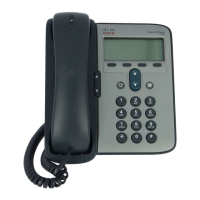There are interactions, restrictions, and limitations that affect how security features work on your phone.
For more information, contact your system administrator.
Note
A device engaged in a call is either trusted or untrusted. Lock or shield icons are not displayed on a Cisco
Unified IP Phone screen when a call is to or from an untrusted device, even though the call might be
secure.
Note
Suspicious Call Trace
If you are receiving suspicious or malicious calls, your system administrator can add the Malicious Call
Identification (MCID) feature to your phone. This feature enables you to identify an active call as suspicious,
which initiates a series of automated tracking and notification messages
Notify System Administrator About Suspicious or Harassing Call
Procedure
Press MCID.
Your phone plays a tone and displays the message MCID successful. Your administrator receives
notification about the call with supporting information to take appropriate actions.
Priority Calls
This feature applies to SCCP phones only.
In some specialized environments, such as military or government offices, you might need to make and receive
urgent or critical calls. If you have the need for this specialized call handling, your system administrator can
add Multilevel Precedence and Preemption (MLPP) to your phone.
Keep these terms in mind:
•
Precedence indicates the priority associated with a call.
•
Preemption is the process of ending an existing, lower priority call while accepting a higher priority call
that is sent to your phone.
Then...If you...
Contact your system administrator for a list of corresponding
precedence numbers for calls.
Want to choose a priority (precedence)
level for an outgoing call
Enter the MLPP access number (provided by your system
administrator) followed by the phone number.
Want to make a priority (precedence) call
Cisco Unified IP Phones 7906G and 7911G User Guide for Cisco Unified Communications Manager 9.0 (SCCP
and SIP)
40
Calling Features
Suspicious Call Trace

